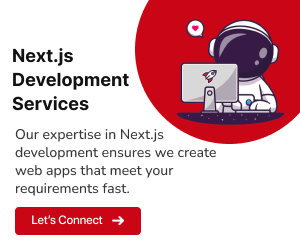In the ever-evolving landscape of mobile app development, startups often find themselves at a crossroads, faced with a pivotal decision that could shape the trajectory of their digital journey. The choice between Native and Hybrid development approaches isn’t just a technical decision; it’s a strategic one that carries profound implications for the performance, user experience, and long-term viability of the application.
This guide aims to be a beacon of clarity in the often complex and multifaceted world of app development methodologies. Whether you’re steering towards the native shores of platform-specific coding or contemplating the nimble waters of cross-platform hybrid solutions, understanding the nuances and intricacies is crucial. This isn’t just a technical decision; it’s a choice that defines your startup’s digital identity, influences user perception, and determines the course of your technological evolution.
Native Mobile App Development
Native app development involves crafting applications exclusively for a specific platform—iOS or Android—using platform-specific languages such as Swift or Kotlin. This approach ensures optimal performance and leverages features unique to each platform.
Advantages
Performance:
Native apps often outshine their hybrid counterparts due to direct access to device APIs and native optimization, resulting in seamless user experiences.User Experience:
A native approach ensures a harmonious integration with the platform’s design guidelines, providing users with an interface that feels intuitive and native.Access to Device Features:
Developers have unrestricted access to device features, empowering them to create sophisticated and feature-rich applications.
Disadvantages
Development Time and Cost:
Building separate codebases for iOS and Android increases development time and costs compared to hybrid alternatives.Maintenance Challenges:
Synchronizing updates across two separate codebases can pose challenges, requiring meticulous maintenance efforts.Platform-Specific Expertise Required:
Teams need proficiency in both iOS and Android development, which might be daunting for smaller startups with limited resources.
Examples of Native Success
Instagram:
Renowned for its smooth performance and seamless native camera integration.Pokemon GO:
Utilizes native features like GPS and augmented reality for an immersive user experience.
Future Trends in Native Development
- Emerging technologies such as ARKit for iOS and ARCore for Android are enhancing the capabilities of native apps.
Hybrid Mobile App Development
Hybrid app development employs web technologies (HTML, CSS, JavaScript) and encapsulates them in a native container, allowing the application to run on multiple platforms.
Advantages
Cross-Platform Compatibility:
Hybrid apps, with a single codebase, can seamlessly operate on both iOS and Android platforms, offering significant time and resource savings.Faster Development Time:
The write-once-deploy-everywhere philosophy accelerates the development cycle, enabling quicker time-to-market.Cost-Effectiveness:
The development and maintenance costs for hybrid apps are generally lower compared to their native counterparts.
Disadvantages
Performance Issues:
Hybrid apps might not match the performance levels of native apps, especially for graphics-intensive applications.Limited Access to Native Features:
Certain device features might be inaccessible, limiting the app’s capabilities compared to native solutions.Dependency on Third-Party Frameworks:
Hybrid apps often rely on third-party frameworks like React Native or Flutter, introducing additional complexities and dependencies.
Examples of Hybrid Success
UberEats:
Utilizes a hybrid approach for cross-platform compatibility and faster development.Untappd:
Balances performance and cross-platform benefits using a hybrid framework.
Evolving Hybrid Technologies
- Continuous advancements in hybrid frameworks are narrowing the performance gap between hybrid and native apps.
Considerations for Startups
Budget Constraints:
Consider your startup’s financial resources and determine which approach aligns with your budget. While native development may have higher upfront costs, hybrid development might offer long-term savings.
Time-to-Market:
Evaluate how quickly you need to launch your app. If speed is crucial, a hybrid approach might be more suitable due to its faster development cycle.
User Experience Priorities:
If delivering a seamless, platform-specific user experience is a top priority, native development might be preferable. Consider the target audience and their platform preferences.
Long-Term Scalability and Maintenance:
Consider the long-term scalability and maintenance requirements of your app. Native apps often offer more robust solutions for complex projects with evolving feature sets.
Niche Considerations:
For gaming startups, native development might be preferable for leveraging platform-specific gaming libraries and APIs. Content-driven apps might find a more cost-effective solution in a hybrid approach.
Case Studies
Examples of Successful Startups with Native Apps:
Illustrate cases where startups thrived by choosing native development, emphasizing performance and user experience.Examples of Successful Startups with Hybrid Apps:
Highlight instances where startups succeeded with hybrid apps, focusing on cost-effectiveness and quicker development.Hybrid Apps Scaling Successfully:
Document instances where hybrid apps scaled successfully and navigated performance challenges effectively.
Decision-Making Criteria
Analyzing Specific Project Requirements:
Carefully assess your project’s requirements to determine which features and capabilities are essential. If native features are critical, a native approach might be necessary.
Evaluating Team Expertise:
Consider the skills and expertise of your development team. If they have experience in both native and hybrid development, weigh the advantages based on the specific project.
Weighing Development Time and Costs:
Balance the benefits of faster development and cost savings against potential performance and user experience trade-offs. Factor in the long-term costs associated with maintenance.
Considering Future Scalability and Updates:
Anticipate future needs and evaluate which approach is more conducive to scalability and future updates. Native apps may provide a more robust foundation for scalability.
Emerging Technologies:
Explore how emerging technologies might influence the decision-making process. For instance, advancements in cross-platform frameworks might address current hybrid limitations.
Conclusion
Choosing the right mobile app development approach is essential for startups. Understanding the nuances of native and hybrid apps is imperative to align with your startup’s goals, whether prioritizing performance, cost-effectiveness, or cross-platform compatibility. Thorough analysis and consideration of your startup’s unique requirements are key to making the right choice in this dynamic landscape. GeekyAnts, a leading mobile app development company, can help startups make the right choice and develop high-quality, innovative mobile apps. With a team of experienced and skilled developers, GeekyAnts has a proven track record of helping startups achieve their business objectives. Reach Us here.

























